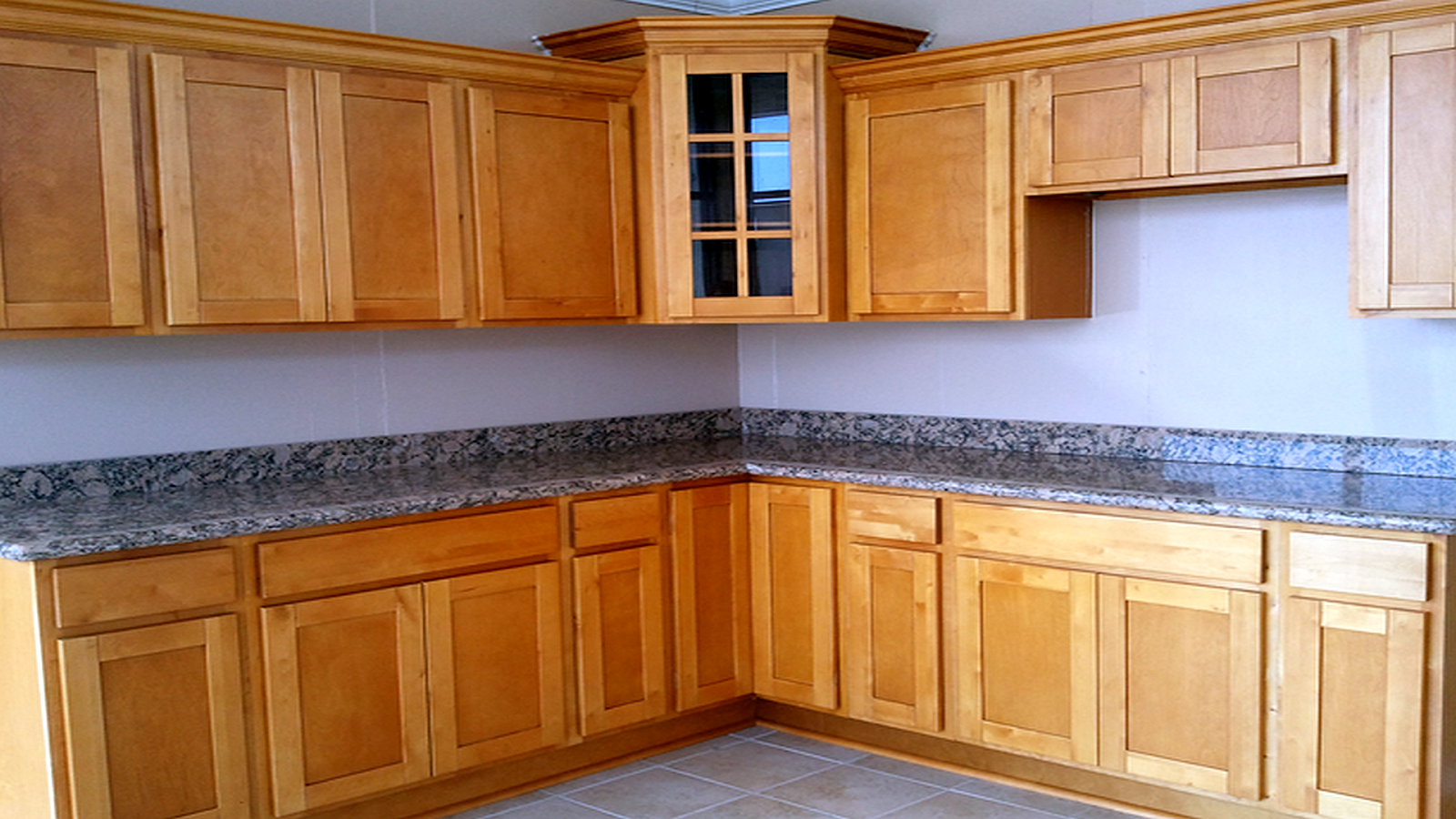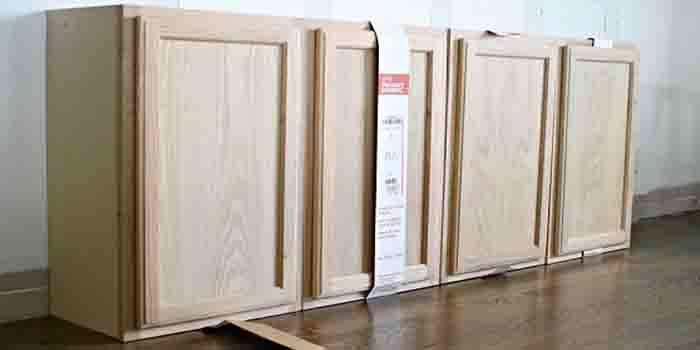Preparing Your Cabinets: How To Stain Unfinished Cabinets

Before you can unleash your inner artist and stain your cabinets, you gotta prep them like a pro. Imagine this: You’re about to paint a masterpiece, but your canvas is covered in dust and grime. Same goes for your cabinets! Cleaning and sanding are crucial steps to ensure a smooth, even stain that’ll make your cabinets look like they just stepped out of a furniture showroom.
Cleaning Your Cabinets
Cleaning your cabinets is like giving them a spa day before their makeover. This removes dirt, grease, and any previous finishes that might interfere with the stain. It’s a crucial step to ensure the stain adheres evenly and beautifully.
- Start with a gentle cleaner: Use a mild dish soap and warm water solution to clean the cabinets. Avoid harsh chemicals or abrasive cleaners that could damage the wood. Think of it as a pampering session, not a scrub-a-dub-dub.
- Scrub gently: Use a soft cloth or sponge to gently scrub the surfaces. Don’t be too aggressive; you don’t want to scratch the wood. Remember, we’re aiming for a smooth, flawless finish, not a battlefield.
- Rinse thoroughly: Rinse the cabinets with clean water to remove any soap residue. You don’t want any soap suds interfering with the stain, do you?
- Let them dry completely: Allow the cabinets to air dry completely before moving on to the next step. Patience is key, my friend. You don’t want to rush into the next step with damp cabinets, or you might end up with a patchy stain.
Sanding Your Cabinets, How to stain unfinished cabinets
Sanding is like giving your cabinets a mini-massage, smoothing out any imperfections and preparing them for their stain makeover. The right sanding technique will create a smooth surface for the stain to adhere to, resulting in a beautiful, even finish.
- Start with a coarse grit: Begin with a coarse-grit sandpaper, like 80-grit, to remove any rough spots or imperfections. Think of it as the first layer of a good facial scrub.
- Progress to a finer grit: Once the initial imperfections are gone, switch to a finer grit sandpaper, like 120-grit, to smooth out the surface. It’s like applying a gentle moisturizer after a good scrub.
- Finish with the finest grit: Finally, use a very fine-grit sandpaper, like 220-grit, to create a super-smooth finish. This is the final touch, like applying a luxurious face mask.
- Sand with the grain: Always sand in the direction of the wood grain. This helps to create a smooth, even surface and avoids scratches. Imagine you’re stroking the wood with a feather, not dragging a rake across it.
Choosing the Right Sandpaper Grit
The sandpaper grit you choose depends on the type of wood and the desired finish. Here’s a quick guide to help you choose the right sandpaper:
| Wood Type | Sandpaper Grit |
|---|---|
| Softwood (Pine, Fir) | 120-grit, 150-grit |
| Hardwood (Oak, Maple) | 150-grit, 180-grit |
Removing Dust and Debris
Once you’ve cleaned and sanded your cabinets, it’s time to dust off any leftover debris. Imagine you’re getting ready for a fancy dinner party: You wouldn’t want any crumbs or dust on your table, right? Same goes for your cabinets! A clean surface is key for a beautiful stain finish.
- Use a tack cloth: A tack cloth is a sticky cloth that picks up dust and debris. It’s like a magnet for dust particles. Just wipe it over the surfaces, and voila! Your cabinets are dust-free.
- Vacuum: If you’re dealing with stubborn dust or debris, use a vacuum with a brush attachment to remove it. Think of it as a dust-busting superhero.
Choosing the Right Stain

Selecting the right stain for your cabinets is crucial for achieving the desired look and feel. The type of stain you choose will affect the color, finish, and durability of your cabinets.
Types of Wood Stains
Wood stains are available in various types, each with its unique properties. The most common types include:
- Oil-based stains: Oil-based stains penetrate deeply into the wood, providing a rich, even color. They are known for their durability and resistance to water damage. However, they take longer to dry and require proper ventilation due to their strong odor.
- Water-based stains: Water-based stains are less toxic and dry faster than oil-based stains. They are also easier to clean up. However, they may not penetrate as deeply as oil-based stains, resulting in a less vibrant color.
- Gel stains: Gel stains are thicker than oil-based or water-based stains, making them ideal for filling in pores and creating a smooth finish. They are also less likely to run or bleed, making them suitable for vertical surfaces. However, they can be more expensive than other types of stains.
Selecting the Right Stain Color
The color of your stain will depend on the type of wood you are using and the aesthetic you are trying to achieve. Here are some general guidelines:
- For lighter woods like maple or birch, consider using a light stain to enhance the natural grain or a darker stain to create a more dramatic look.
- For darker woods like walnut or cherry, a darker stain will deepen the natural color, while a lighter stain can create a more rustic or antique appearance.
- For a modern look, consider using a clear stain or a stain with a slight color tint.
- For a traditional look, choose a darker stain with a rich color.
Understanding Stain Colors and Finishes
It’s important to differentiate between stain colors and finishes.
Stain colors are pigments that penetrate the wood and change its color.
Finishes, on the other hand, are protective coatings that are applied over the stain to seal and protect the wood.
Finishes come in various types, such as polyurethane, varnish, and lacquer. Each finish offers different levels of durability, gloss, and protection.
Testing Stain Colors
Before applying stain to your cabinets, it’s essential to test the color on a scrap piece of wood. This will allow you to see how the stain interacts with your specific wood type and how it looks under different lighting conditions.
It’s best to test the stain on a piece of scrap wood that is similar in size and grain to your cabinets.
Apply the stain to the scrap wood and allow it to dry completely. Then, compare the color to your desired aesthetic. You can adjust the color by adding more stain or by using a different type of stain.
Applying the Stain

Now that your cabinets are prepped and you’ve chosen your stain, it’s time to get your hands dirty, literally! Applying stain is the fun part, but it also requires some finesse to achieve a professional-looking finish. Don’t worry, we’ll guide you through the process step-by-step.
Applying the Stain
Applying the stain is like painting, but with a twist. You’re not covering the wood completely, you’re just enhancing its natural beauty. There are a few different methods you can use, each with its own pros and cons.
Using a Brush
Using a brush is the most common method for applying stain, and it’s a good choice for beginners. It allows you to control the amount of stain applied and reach into tight corners. Here are some tips for using a brush:
- Use a natural bristle brush, as synthetic brushes can leave streaks.
- Dip the brush into the stain, but don’t overload it. You want to apply a thin, even coat.
- Work in the direction of the wood grain. This will help to create a more natural look.
- Avoid going over the same area multiple times, as this can cause the stain to become uneven.
Using a Cloth
Using a cloth is a good option for applying stain to large, flat surfaces, like cabinet doors. It can also be used to create a more rustic look, as it can leave some unevenness in the stain. Here are some tips for using a cloth:
- Use a clean, lint-free cloth. You can use a cotton rag or a cheesecloth.
- Dip the cloth into the stain and then wring it out so it’s not dripping.
- Apply the stain in a circular motion. This will help to create a more even finish.
- Be careful not to press too hard, as this can cause the stain to become uneven.
Using a Sprayer
Using a sprayer is the fastest method for applying stain, but it can be tricky to control. It’s best to use a sprayer if you have a lot of cabinets to stain, or if you’re looking for a very even finish. Here are some tips for using a sprayer:
- Use a sprayer that’s specifically designed for staining. This will help to ensure that the stain is applied evenly.
- Practice on a scrap piece of wood before you start staining your cabinets.
- Hold the sprayer about 6-8 inches away from the cabinets. This will help to avoid overspray.
- Apply the stain in thin, even coats. Avoid going over the same area multiple times.
Working in Thin Coats
Applying thin coats of stain is crucial for achieving a consistent and even finish. If you apply too much stain at once, it can pool in certain areas and create an uneven look. Plus, thicker coats can take longer to dry, increasing the risk of drips and spills.
Drying Time
Once you’ve applied a coat of stain, it’s important to allow it to dry completely before applying the next coat. The drying time will vary depending on the type of stain you’re using, the temperature, and the humidity. Always refer to the manufacturer’s instructions for the recommended drying time.
Handling Drips and Spills
Accidents happen, and drips and spills are inevitable when working with stain. If you do have a spill, clean it up immediately with a damp cloth. Don’t let the stain dry, as it will be much harder to remove once it’s set.
How to stain unfinished cabinets – Giving your unfinished cabinets a fresh look can be as easy as staining them. But sometimes, you might want a bolder transformation. For a modern and stylish update, consider the Rustoleum cabinet transformations in Gray Harbor style, which uses a unique blend of gray tones for a sophisticated finish.
Whether you choose a classic stain or a more modern makeover, remember to prep your cabinets properly for a long-lasting and beautiful result.
Giving your unfinished cabinets a fresh look is a great way to revitalize your kitchen. You can achieve a stunning modern aesthetic by opting for a gray stain, like the timeless elegance of hampton bay dove gray cabinets.
Whether you’re aiming for a farmhouse chic or a minimalist vibe, a gray stain can elevate your kitchen’s charm and create a cohesive, sophisticated space. Remember to prep your cabinets properly before applying the stain for a smooth, even finish.